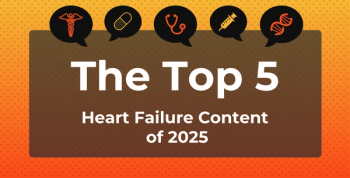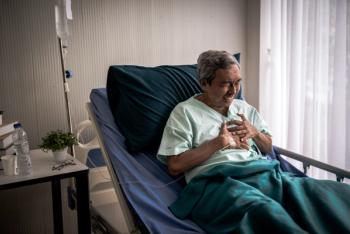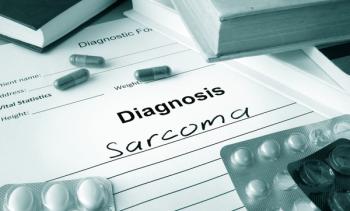
Dr Alyson Moadel-Robblee on Effective Distress Screening and Support Systems for Patients With Cancer
Alyson Moadel-Robblee, PhD, deputy director of community engagement and cancer health equity at Montefiore Einstein Comprehensive Cancer Center, discussed the center's evolving patient distress screening process and the Bronx Oncology Living Daily support program for patients with cancer.
Alyson Moadel-Robblee, PhD, deputy director of community engagement and cancer health equity at Montefiore Einstein Comprehensive Cancer Center, discussed the center's evolving patient distress screening process and the Bronx Oncology Living Daily (BOLD) support program for patients with cancer.
Transcript
Could you share details about the distress screening workflow you implemented, and were there any specific challenges or barriers during the implementation process?
Our distress screening process took place probably about 8 to 10 years ago. We started talking with the nurse navigators and the cancer center leadership about implementing the distress thermometer with all of our oncology outpatients. It was quite a fiasco, because it was adding another burden to our nurses, our nurse navigators, that they'd have to administer that on top of everything else they already do in terms of assessment. But they took it on like champs, and the challenges were, first, the burden that they had, because they had to get through so many assessment points. But then, we found that patients were underreporting distress—it just didn't make sense that only 10% or 15% of patients newly diagnosed with cancer were saying they were clinically distressed, so we knew that wasn't right. So, we're still tweaking it. We're still trying to do education. I'm a psychologist, so educating nurses how to introduce the topic with patients on how to ask them about distress and things like that. But they're still underreporting, so now we're giving patients paper and pencil to fill out and do it on their own. We're going to do a pilot QI [quality improvement] project to compare the nurse-delivered vs the patient-administered distress thermometer and see how it goes.
What is the role of the "treatment buddy" program, and can you share examples of how the program has addressed and alleviated stress among patients?
Our BOLD buddy program—BOLD stands for Bronx Oncology Living Daily—is a peer navigation program in the Bronx, and it's made up of cancer survivors from the Bronx who give back to those who are recently diagnosed. These are patients who've been through it and want to help those in their community.
It's been really impactful because a lot of patients are happy to have professional counseling or a support group, but they really often say, "I want to talk to somebody who's been through it." So talking to a BOLD buddy, or this peer navigator, helps them realize that there's hope. There's life after cancer, there's somebody who's in front of them who says, "Listen, I'm working, and I'm doing OK." So it gives them a sense of, "OK, this isn't the end of the world." And the buddies also give them a little bit of a sense of what is in front of them and what to expect.
Also, they say, "Listen, if you need social work, speak up. If you need rehab medicine, speak up. These services are here, and if you don't take them early on, you can always ask for them, so make sure that you ask for any kind of support you need." They're their advocates and their role models. Cancer is a very lonely disease, and a lot of patients feel very isolated—they're afraid to tell their families and loved ones, and when they do, the families don't always understand it, they often minimize it. The buddies are like, "Talk to me, I get it." So, it's helped them a lot, and the results of our evaluations bear that out. The patients say that they have less distress, less anxiety speaking with a buddy, they feel more hopeful, they feel more able to talk to their health care team, because of having a buddy and having their experience and wisdom. And, most importantly, they're more apt to complete their treatments and not be nonadherent, so that is really exciting.
How does the program ensure an inclusive and diverse health care system?
Well, we're in the Bronx, and the Bronx is one of the poorest and most diverse and underserved communities in the United States. It's primarily Hispanic—57% Hispanic, 44% African American, and 34% are foreign-born from all over. So, our peer navigators are from the Bronx. They're diverse, and they're sort of the bridge to the health care team. But the health care team, many of them are from the Bronx—our nurses, our administrative assistants, our support staff, so we're very diverse. We also at our Montefiore Einstein Comprehensive Cancer Center have a diversity, equity, and inclusion office. So, we are really focused on promoting our diverse community to be the leaders of the future in cancer science and cancer care, so we're always about career development and diversity.
Newsletter
Stay ahead of policy, cost, and value—subscribe to AJMC for expert insights at the intersection of clinical care and health economics.







































